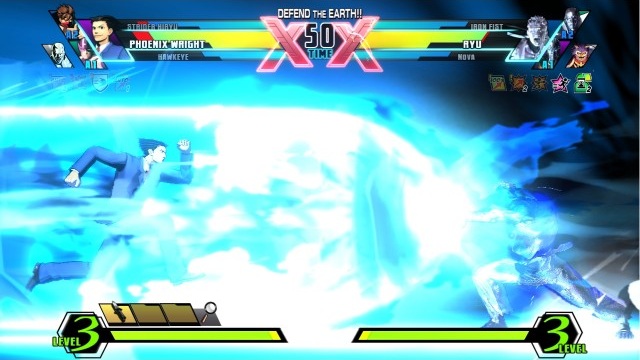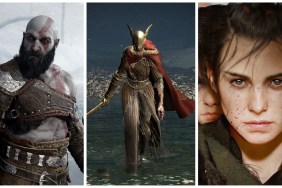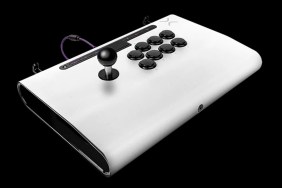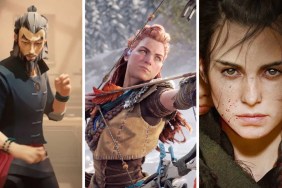Worth inserting more credits?
It seems Capcom is really on top of these enhanced re-releases. Not even a year after Marvel vs Capcom 3's release, they've turned around the now expected overhauled version at the price of $40 and added the word “Ultimate” in front. With twelve new characters and tons of tweaks and changes, this is certainly the definitive version of the crazy crossover fighter, but is it be worth the investment? That all depends on your previous experience with the orginal MvC3.
If you skipped MvC3 back in February (perhaps because you weren't in a rush and knew this version would come), then for $40, you're getting a very solid fighter with a huge cast and lots of attention to detail. There's a deep well of possibilities and hardships—but don't expect the game to educate you in any way. Unlike other modern fighters, such as BlazBlue, there is no tutorial here of any sort, so you'd best look up online what the mechanics are if you're a newcomer.
There is a Mission Mode, which merely runs you through progressively more complicated combos for each character to open your eyes to the wealth of possibilities, but that's about it. UMvC3 is not here for you newcomers, and a few online sessions of getting caught in ridiculous, inescapable combos will swiftly make this clear.
Of course, because everyone and their mother is capable of capturing their opponents in obscenely long juggles, this also means that you can too. MvC3's system is built so that if you can envision a combo and put the practice into it, you can probably make it happen. With the new gameplay balances, even more options are available to many of the characters, including entirely new moves added to some of the original cast. The interface has been touched up as well, offering speedy load-times (after a mandatory install) and sensical HUD tweaks, such as making the active character's lifebar larger than the other two and making X-Factor much more clear when it's activated. Speaking of, the come-back mechanic can be used in mid-air now, opening even more of combo possibilities.
As for modes, Arcade Mode and Mission Mode are both back, making the single-player experience pretty much the same, but online has been improved in subtle ways. At last, players can now spectate matches (which was oddly lacking before) and matchmaking works better than before. Gone are the days of being kicked back to the main menu after a few seconds without finding an opponent. Of course, you can always enter Training Mode or Arcade and play while you wait for a connection, which is definitely useful. Netcode doesn't seem to have changed, however—it's still very adequate but not ideal. At least the game seems more accurate with telling you the network stability with an opponent before you accept a match.

The special missions that were added as free DLC in MvC3 are no longer present, and neither are the Shadow Battles. Instead, a “Heroes vs Heralds” mode is alluded to and has been announced as free post-release DLC but, as of this writing, is still a no-show. It's nice to see that something new is in development and will not cost extra, but it's odd that some original features were removed—not to mention that Jill and Shuma-Gorrath are still DLC characters that need to be paid for separately if you didn't already buy them.
As for other changes, some of the music has been altered for a change of pace, and while there are technically a whole new batch of levels, they are by and large just reduxes of present ones. Some are different enough to invoke a brand new feel, while others… not so much. But the main reason why this expansion exists is for the twelve new characters, and if you're a fan of the game to the point where you're still playing it months after release, then this new group of fighters will probably be worth the price of admission to extend your play value. If you were waiting for the inevitable, then you're going to be getting about 50 playable characters in a fast-paced, accessible combat system for $40.
The characters that have been added are great choices in terms of mechanics, regardless of your preferences in their personalities. Hawkeye plays a mean game of keep-away with his brand of projectile madness, while Dr. Strange utilizes his own combo of magic powers. Rocket Raccoon's mobility and trap-based play-style are refreshing, while Frank West's 'Level Up' ability adds a twist for players who want to maximize his potential. And then there's the infamous Phoenix Wright, the defense attorney, whose mechanical departure is as close to Blazblue-esque as modern Capcom fighters have gotten. Of the new characters, no matter what your preferences are, you are bound to find someone new you can either incorporate into your own roster or someone you will want to learn how to use efficiently.

It's easy for gamers who aren't much into fighters to write off the significance that a new batch of playable characters can add to the depth and value of a fighting game, likely in the same way many write off what map packs can do for shooters. While it would've been nice to see this as a DLC add-on for those of us who purchased the original MvC3, the fact is that the entire game is literally altered, from its content to its mechanics to its interface, and such a “patch” would have been quite an oversized and complicated way to deliver it. If you have never picked up MvC3 or any MvC game, the price is more than worth the amount of content, depth, and attention to detail this package offers. That said, if you are new, you will probably want to do a bit of research on how to play the game first, as it expects you to have your “bread and butter” down pat out of the gate.
Review based on the Xbox 360 system. Review copy provided by publisher.
-
Gameplay balances, tweaks, new moves
-
New cast adds much more variety
-
Interface and online functions streamlined
-
Missing features from standard version
-
Still lacking in-game tutorial
-
New stages are just rehashes of old ones











